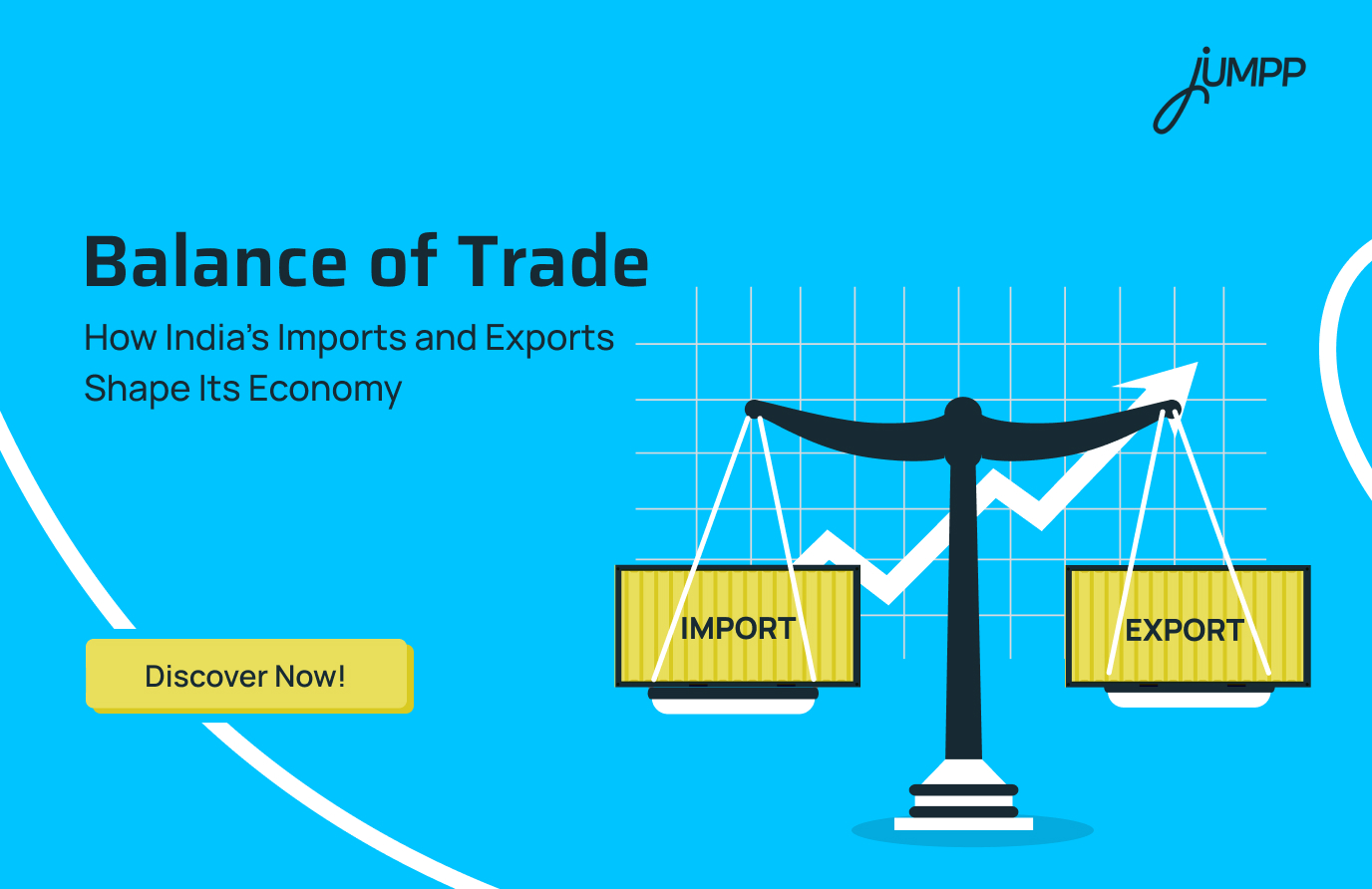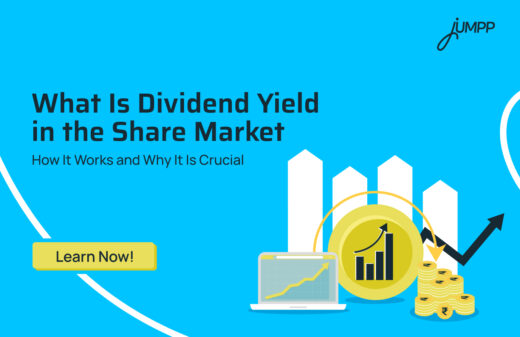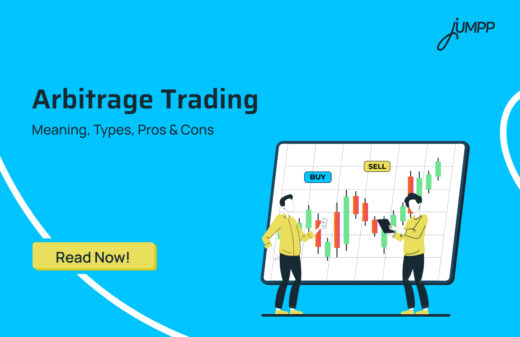Is India Earning or Spending Too Much? Discover Its Balance of Trade

Every day, countries exchange goods. We all know that India sells textiles to the US, buys crude oil from the Middle East, and trades tea with Europe. Now, when tariffs change or international trade rules shift, prices of daily essentials like oil or dried fruits often rise. But how do we know if India is earning more than it spends on these trades? The answer lies in a simple but powerful measure called the Balance of Trade.
It tells us which countries are earning more, spending more, and what their real position is in the global market.
In 2024, India exported $350 billion worth of goods but imported $400 billion. This difference between exports and imports actually tells a story about India’s trade health. And this story is measured and presented by the most important economic measure called the Balance of Trade.
Let us learn the balance of trade meaning in depth!
What is Balance of Trade (BoT)?
The balance of trade (BoT), also called the trade balance, is an important economic tool that shows the difference between what a country exports and imports over a certain period. It plays a key role in a country’s overall balance of payments.
When a country exports more than it imports, it has a positive BoT. This is known as a trade surplus.
On the other hand, if imports are higher than exports, it results in a negative BoT or trade deficit.
Balance of Trade (BoT) is a part of the broader Balance of Payments (BoP), which includes both goods and services.
Balance of Trade Formula –
Balance of Trade = Value of Exports − Value of Imports
- If exports > imports = Trade Surplus
- If imports > exports = Trade Deficit
Balance of Trade Example:
Suppose in one year:
- India’s exports = ₹28 lakh crore
- India’s imports = ₹35 lakh crore
BoT= ₹28,00,000crore − ₹35,00,000crore = −₹7,00,000crore
This means India has a trade deficit of ₹7 lakh crore because imports are higher than exports.
Features of Balance of Trade-
- The balance of trade is calculated by subtracting the total value of imports from the total value of exports over a specific period.
- It shows the movement of goods and services in and out of a country.
- The result is usually shown in the country’s own currency.
What are the Components of Balance of Trade?
The two main components of the Balance of Trade are exports and imports.
The difference between the two tells us whether a country is earning more or spending more in global trade.
Exports (Money Coming In):
These are the products and services India sends abroad.
This could be
- Agricultural goods like rice, tea, spices, etc.
- Manufactured products like textiles, machinery, chemicals, etc.
- Services such as IT outsourcing, education, tourism, etc.
Imports (Money Going Out):
These are the products and services India buys from other countries.
This could be
- Raw materials and essentials like crude oil, dried fruits, coal, etc.
- Precious metals like gold, diamond, and silver
- Electronics and machinery like mobile phones and industrial equipment
- Services such as software, consultancy, or international transport
How the Balance of Trade Works
The Balance of Trade is a simple way to understand whether a country is earning more from trade or spending more.
Policymakers, economists, and investors often use boT to understand India’s trade performance, global competitiveness, and economic health.
Features of Balance of Trade (BoT)
The Balance of Trade shows a country’s trade in goods with the rest of the world.
1. Focus on Goods
BoT mainly looks at tangible products such as cars, electronics, machinery, textiles, and agricultural items that a country exports or imports. For example, India exports textiles, software services, and jewellery, while it imports crude oil, gold, and machinery.
2. Trade Surplus or Deficit
BoT tells us if a country exports more than it imports or the other way around. A trade surplus happens when exports are higher than imports.
For instance, if India exports goods worth $40 billion and imports $35 billion, it has a trade surplus of $5 billion. A trade deficit happens when imports are higher than exports.
3. Part of Balance of Payments
It is important to remember that BoT is a key part of the Current Account in the larger Balance of Payments. Herein, BoP tracks services, investment income, and remittances.
BoT focuses only on goods, while BoP provides the full understanding of all international financial activities.
4. Measures Trade Performance
BoT shows how competitive a country is in global trade. A positive balance means the country is a net seller of goods and is performing well internationally.
A negative balance may show reliance on imports or weaker exports.
Types of Balance of Trade: Surplus, Deficit, and Balanced Trade
Now, based on whether exports are higher, lower, or equal to imports, the BoT can be grouped into three types:
1. Trade Surplus (Favourable Balance of Trade):
This happens when a country exports more than it imports. It shows strong global demand for its products. This can increase foreign currency reserves and often strengthen the country’s currency.
2. Trade Deficit (Unfavourable Balance of Trade):
This situation occurs when imports exceed exports. If a country has a long-term trade deficit, it can lead to a weaker currency and higher foreign debt.
3. Balanced Trade (Equilibrium Balance of Trade):
This condition occurs when exports and imports are equal.
It represents a perfect balance. However, in reality, it is rare in practice because trade constantly fluctuates.
It’s important to know that having a surplus or deficit does not automatically mean a country is economically strong or weak. There are multiple other things that are taken into account.
For instance, understanding why the imbalance exists, how long it lasts, and other factors like inflation, unemployment, and overall economic health are also important.
Balance of Trade vs Balance of Payments: Key Differences You Must Know
As we already learnt, the balance of Trade shows the difference between what a country sells abroad and what it buys from other nations.
On the flipside, the Balance of Payments is broader. It records all international transactions, including goods, services, capital flows, and remittances. It is meant to show the country’s overall position in the world economy.
Here is the key difference between BoT and BoP-
1. Types of Transactions Covered
- BoT: It tracks only the import and export of goods.
- BoP: It covers all economic transactions with other countries, including goods, services, income from investments, and capital flows.
2. Components of Each
- BoT: It includes only the value of goods traded.
- BoP: It has three main parts:
Current account: Goods, services, income, and transfers
Learn the savings account meaning here and why it matters for your financial future.
Capital account: Capital transfers and non-produced assets
Financial account: Financial assets and liabilities, like foreign investments and loans
3. Overall Balance
- BoT: It can show us three situations-
surplus (exports > imports)
a deficit (imports > exports), or a balance.
- BoP: It shows the overall financial situation of the country.
Here’s the quick overview of the balance of trade vs balance of payment-
| Basis | Balance of Trade (BoT) | Balance of Payments (BoP) |
| Definition | The difference between the value of exports and imports of goods only | It is the record of all economic transactions between a country and the rest of the world |
| Scope | It covers only goods (visible trade) | BoP is a broader aspect. It covers goods, services, investments, remittances, and capital transfers |
| Components | Exports and Imports of Goods | Current Account, Capital Account, Financial Account |
| Nature | Part of Balance of Payments | A whole system that includes a BoT |
| Indicator | This shows trade position (surplus, deficit, balance) | It shows the overall economic position of the country. |
So basically, BoT focuses on goods traded, while BoP gives a full picture of all international economic activity. Both are key to understanding a country’s economic health.
Important Factors Influencing Trade Balances
A country with a large trade deficit often needs to borrow money to pay for the goods and services it imports.
On the other hand, a country with a trade surplus can lend to others.
However, a country can borrow easily only if it is considered reliable and creditworthy. For example, the United States can borrow large amounts because global lenders trust it to repay.
Countries with lower creditworthiness often face higher borrowing costs. This makes a deficit more harmful for their economy.
It is important to understand that a trade surplus or deficit alone does not show the full health of an economy. The balance of trade must be looked at alongside other economic indicators.
- During a recession, countries try to increase exports to create jobs and increase the demand in the economy.
- During economic growth, countries tend to import more. This is because imports help increase competition in the market. It can help keep prices stable and limit inflation.
Importance of Balance of Trade
How important is the Balance of Trade for India’s Economy and Investors?
BoT plays an important part in understanding a country’s economy:
1. Shows the Economic Strength of the Nation
A trade surplus indicates strong domestic industries. For example, high demand for Indian textiles, software exports, or pharmaceutical products shows that India competes well globally.
2. Impact on the Value of the Currency
A surplus can increase demand for the country’s currency because foreign buyers need it to pay for exports.
A long-term deficit can weaken the currency because the country spends more on imports.
3. Affects the Economic Policies
Governments use BoT information to make trade decisions. They may impose tariffs on certain imports to protect domestic industries, offer incentives to exporters, or sign trade agreements to boost exports.
4. Effect on GDP
Exports add to GDP (Gross Domestic Product) while imports reduce it. A trade surplus usually helps GDP grow, while a deficit can slow it down.
For India, exports like IT services, textiles, and pharmaceuticals contribute positively to GDP, while imports such as crude oil or gold reduce net GDP growth.
5. Generates Employment
Strong exports create jobs in production, shipping, logistics, and related industries.
For example, growing pharmaceutical exports in India creates more jobs in factories, warehouses, and shipping companies.
6. BoP is useful for Investors and Traders
BoT trends show which sectors are performing well internationally. A growing surplus in pharmaceuticals or IT services, for example, can signal opportunities for investors in related companies.
India’s Latest Balance of Trade: Is India Earning or Spending Too Much? (August 2025)
India is currently spending a lot more than it is earning through exports. In July 2025, the country recorded one of its largest trade deficits in recent months.
Imports, especially of raw materials, fuel, and gold, have increased. However, on the other hand, while exports are growing, they are not growing fast enough to keep up.
The recent tariff pressures from the US are also affecting exporters, making the situation more challenging.
Here are the key details as of July 2025-
- In July 2025, India’s merchandise (goods) exports were $37.24 billion, while imports were $64.59 billion. That’s why the trade deficit was so high.
India spent almost $27.35 billion more on imports than it earned from exports.
- In June 2025, exports were a bit lower at $35.14 billion, and imports were $53.92 billion.
- Export services for July 2025 were $31.03 billion, and imports were $15.40 billion.
- Thus, the total exports (goods plus services) in July were $68.27 billion, and total imports were $79.99 billion. This led to the overall trade deficit $11.72 billion.
Key Highlights (July 2025 vs June 2025)
- Exports (Goods): $37.24B, up from $35.14B
- Imports (Goods): $64.59B, up from $53.92B, pushing the merchandise trade deficit to $27.35B
- Trade Deficit (Goods + Services): $11.72B
- Services Exports: $31.03B
- Services Imports: $15.40B
- Combined Exports: $68.27B
- Combined Imports: $79.99B
Track your own spending habits just like a nation’s trade balance with our smart expense tracker app.
Conclusion
The balance of trade simply shows if a country is earning more from exports or spending more on imports.
It’s different from the balance of payments, which covers all international money flows. For India, keeping track of the trade balance matters because it directly affects our currency, jobs, and overall economy.
Balance of Trade Meaning- FAQs
There are mainly three types of Balance of Trade. These include Trade Surplus, when exports exceed imports; Trade Deficit, when imports are greater than exports; and Balanced Trade, when both exports and imports are equal.
Balance of trade (BoT) is the difference between a country’s exports and imports of goods during a specific period. It shows whether a country earns more from exports or spends more on imports.
Balance of Payments (BoP) records all international transactions, including goods, services, and capital. Balance of Trade (BoT) is just a part of the BoP that covers goods only.
The rule of BoP is simple. If exports exceed imports, the trade balance is surplus. If imports exceed exports, it is a deficit. This rule helps measure a country’s trade health.
The Balance of Payments has two main components. These are- Current Account (trade in goods, services, income, transfers) and Capital & Financial Account (investments, loans, reserves).
India usually records a trade deficit because imports, like crude oil and gold, are higher than exports. For August 2025, India’s trade deficit increased sharply due to rising imports and weak exports.
Source– tradingeconomics.com, pib.gov.in






